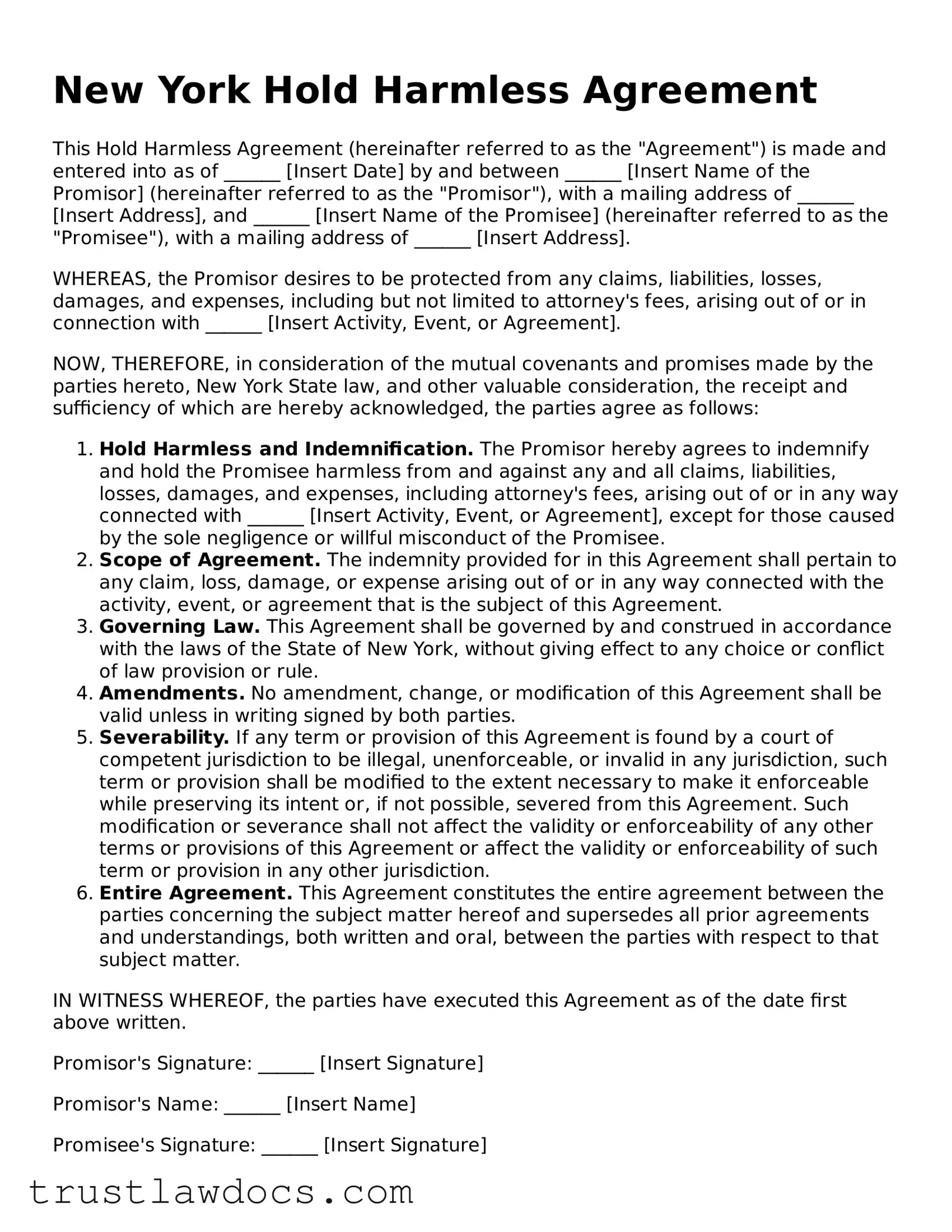New York Hold Harmless Agreement
This Hold Harmless Agreement (hereinafter referred to as the "Agreement") is made and entered into as of ______ [Insert Date] by and between ______ [Insert Name of the Promisor] (hereinafter referred to as the "Promisor"), with a mailing address of ______ [Insert Address], and ______ [Insert Name of the Promisee] (hereinafter referred to as the "Promisee"), with a mailing address of ______ [Insert Address].
WHEREAS, the Promisor desires to be protected from any claims, liabilities, losses, damages, and expenses, including but not limited to attorney's fees, arising out of or in connection with ______ [Insert Activity, Event, or Agreement].
NOW, THEREFORE, in consideration of the mutual covenants and promises made by the parties hereto, New York State law, and other valuable consideration, the receipt and sufficiency of which are hereby acknowledged, the parties agree as follows:
- Hold Harmless and Indemnification. The Promisor hereby agrees to indemnify and hold the Promisee harmless from and against any and all claims, liabilities, losses, damages, and expenses, including attorney's fees, arising out of or in any way connected with ______ [Insert Activity, Event, or Agreement], except for those caused by the sole negligence or willful misconduct of the Promisee.
- Scope of Agreement. The indemnity provided for in this Agreement shall pertain to any claim, loss, damage, or expense arising out of or in any way connected with the activity, event, or agreement that is the subject of this Agreement.
- Governing Law. This Agreement shall be governed by and construed in accordance with the laws of the State of New York, without giving effect to any choice or conflict of law provision or rule.
- Amendments. No amendment, change, or modification of this Agreement shall be valid unless in writing signed by both parties.
- Severability. If any term or provision of this Agreement is found by a court of competent jurisdiction to be illegal, unenforceable, or invalid in any jurisdiction, such term or provision shall be modified to the extent necessary to make it enforceable while preserving its intent or, if not possible, severed from this Agreement. Such modification or severance shall not affect the validity or enforceability of any other terms or provisions of this Agreement or affect the validity or enforceability of such term or provision in any other jurisdiction.
- Entire Agreement. This Agreement constitutes the entire agreement between the parties concerning the subject matter hereof and supersedes all prior agreements and understandings, both written and oral, between the parties with respect to that subject matter.
IN WITNESS WHEREOF, the parties have executed this Agreement as of the date first above written.
Promisor's Signature: ______ [Insert Signature]
Promisor's Name: ______ [Insert Name]
Promisee's Signature: ______ [Insert Signature]
Promisee's Name: ______ [Insert Name]
